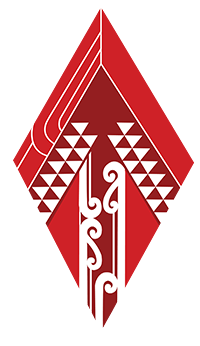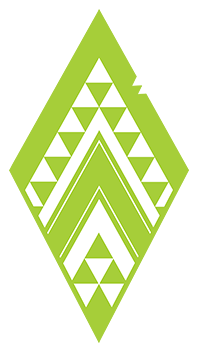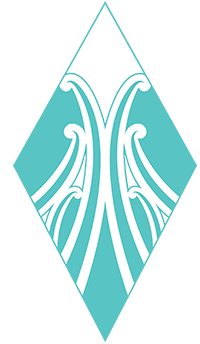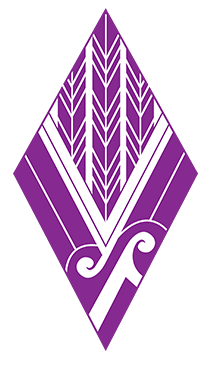Spotlight on Naibuka Sivo: A Journey of Dedication and Innovation in Aviation
We are excited to highlight the inspiring career of Naibuka Sivo, a dedicated professional in the aviation industry. Naibuka’s journey began in Suva, Fiji, where he received a government scholarship to New Zealand to pursue his dream of flying. Despite initial setbacks due to political turmoil at home, Naibuka’s resilience led him to a fulfilling career with Air New Zealand.
Starting as a loader, Naibuka quickly demonstrated his ability to engage with colleagues and stakeholders, embodying the core value that those closest to the problem are best positioned to solve it. His dedication and interpersonal skills have been instrumental in his rise through the ranks.
Over the past 16 years, Naibuka has transitioned from loading to becoming an airfield safety compliance investigator at Auckland Airport. His extensive operational experience and deep understanding of safety protocols have made him a key player in ensuring the safety and efficiency of airport operations. Naibuka’s role involves not only enforcing safety standards but also fostering a culture of safety and collaboration among a diverse workforce.
Naibuka’s commitment to continuous learning is evident in his academic achievements. He attained his pilot license, has completed a bachelor’s in applied management and is currently pursuing a master’s in aviation at Massey University. His academic pursuits have enriched his professional life, providing him with new perspectives and ideas that he brings to his role.
As a Pacific person, Naibuka is passionate about building strong relationships and advocating for the inclusion of diverse voices in the aviation industry. His journey is a testament to the power of perseverance, adaptability, and the pursuit of excellence. We are proud to share Naibuka Sivo’s story and celebrate his contributions to the aviation sector.
The six pou of Mata Ārahi Manomano drive the questions we have used to profile Māori & Pacific role models, in the Service sector.

|

|

|

|

|
|

Representing the levels and forms of aroha that can be found throughout our lives across our many communities. We acknowledge the wide range of obstacles and the journey it takes to overcoming everything that stands in our way to expressing aroha within.
AROHA
Bula Vinaka, my name is Naibuka Sivo. I grew up in Suva. I have a 21 year old daughter.
I am an airfield safety compliance investigator, and most people within the aviation sector know me as a footballer. Some people call me Siva or Buka. One of my strengths, which I find valuable in my work at Auckland Airport, is my interpersonal skills. I am able to engage with people, particularly our stakeholders like ground handlers, 70 to 80% of whom are Pacific and Māori. My strength lies in collaborating with them, actively listening, fostering conversations, and understanding their journeys.
On the other hand, as an airfield safety compliance investigator, I also need to address the reasons why we sometimes have these conversations, emphasizing the importance of following rules and safety protocols around the airfield.
We work with a lot of machinery, including aircraft and other large machines. So, those are some of the strengths I hold: being able to have conversations, understanding where people are coming from with empathy, and then engaging them in my reports or communicating effectively with each company. My communication skills are key.

Seeking guidance from our kaitiaki Hiwa-i-te-rangi, we take a journey through our different aspirations, goals and dreams. This tohu acknowledges hard work, wisdom, the reach of ones goals and the desire that comes from this mahi.
My aim, as I started with Air New Zealand as a loader, was to work my way up through my engagement with the company and the people. One of the core values we uphold at Air New Zealand is that the people closest to the problem are the ones who can solve it.
Through this engagement, I learned that I wanted to expand and spread my wings. There are many areas within the aviation industry that we can tap into.
As mentioned in the Talanoa session you (Ringa Hora), had earlier, people often think that aviation is only about pilots, flight attendants, and maybe engineers. However, there are other branches that I discovered during my engagement. I transitioned into a load controller role and now focus on safety in aviation, leading initiatives to improve safety protocols. Especially now, with Auckland Airport being busy post-COVID, we are working hard every year to influence safety policies and standards, benefiting both Auckland Airport and the people who work around us every day.

With adventure comes challenges as well as obstacles to overcome. We stand proud as we overcome these obstacles. This tohu draws inspiration from the Niho Taniwha and Aramoana patterns. We acknowledge reaching our destination and preparing ourselves for the many new adventures ahead.
I came from Fiji on a Fiji government scholarship to learn to fly here. After obtaining my pilot license, there were problems at home due to the government takeover, which made us look for other areas to tap into. During that time, Air New Zealand was recruiting loaders, so I thought this would be a great opportunity for me to still work within aviation, which I enjoyed, and maybe save money to pursue flying later.
Sixteen years down the road, I am still with Air New Zealand, and I am enjoying everything and have gained valuable operational experience. They brought me from Air New Zealand to handle cargo, and now, with Auckland Airport, I have gained understanding and experience, now being a safety compliance investigator. It works really well because I understand the background of each area of the airport, both from the operations side and the safety side.
It’s really good because we are working on rebuilding Auckland Airport with new legislation coming in every year. One significant change next year will be the implementation of the Just Culture model. This model looks at what happens around any incident, considering what was going through the person’s mind, which is very interesting. We are putting this all together, and with the experience we have, we can understand what people are going through each day.
While being with Air New Zealand, there were many upskilling courses available. At the same time, I was also looking outside of the in-house upskilling. I completed my bachelor’s in applied management and have just started my master’s in innovation with Massey University. My focus on learning is around aviation while working and trying to balance it all together.

These patterns represent bravery and being strong in the face of adversity. We strive to be persistent and positively challenge anything that threatens to alter, restrict, and put a barrier in the way of our desired pathway.
My first year at Auckland Airport, while learning about safety, was a defining moment for me. When I have conversations with our people, I always tell them that they have two “whys.” One “why” is why they are here at work. Most people say they are here to make money and look after their whānau. I also tell them there is another “why,” which is the why of safety.
If you don’t have this “why,” you will lose all privileges. You will lose your driver’s license to drive on the airfield, and you will lose your overtime. I usually tell them that if you have the right to be here and support your family, you also need to think about the “why” of safety. Safety is not just a set of rules; it’s a mindset. You have to work together on these two “whys” to earn a living and enjoy time with your family.

Here we are drawing inspiration from the Pūhoro pattern. The pūhoro is used here to represent the strength, speed and agility needed to move forward and accomplish ones goals.
For someone who’s thinking of pursuing a career like mine, they need to understand the reason “why,” as I mentioned earlier. You have to have the mindset of coming into work but also thinking, “I need to go back home safe to be with my family,” to enjoy all the things you have.
It’s always good when you’re pursuing a career to also try and upskill and learn more skills, like doing part-time studying and things like that. It really helps you a lot. From my experience over the last three years of studying, it has changed my mind set and the way I see things. Ideas come from everywhere, and you tend to connect a lot of this stuff as well. So, it’s always good when you’re doing something to at least do a little bit of studying and research around it, so you are knowledgeable within the aviation industry.

Success, best mentioned in the whakatauki “Tūwhitia te hopo, mairangatia te angitū!” Feel the fear and do it anyway!
Some of the failures I experienced during my 16 years with Air New Zealand were when I tended to get stuck in my comfort zone. Sometimes it can be very comfortable—the money was good, the traveling was good, and the travel discounts with the airline were really good. But for me, the win was putting up my hand to join the engagement team working for the people. This opened up a lot of opportunities in aviation.
I know that I am blessed to be here in New Zealand, but I also still have the cells in my brain that I can use to work and be successful. My passion as a Pacific Islander is talking to people and building strong relationships, coming up with new ideas. Looking back now, if you had told me five years ago that I would be doing a master’s in innovation at Massey, I would probably have said that was impossible. But now, looking back, it’s been a journey.